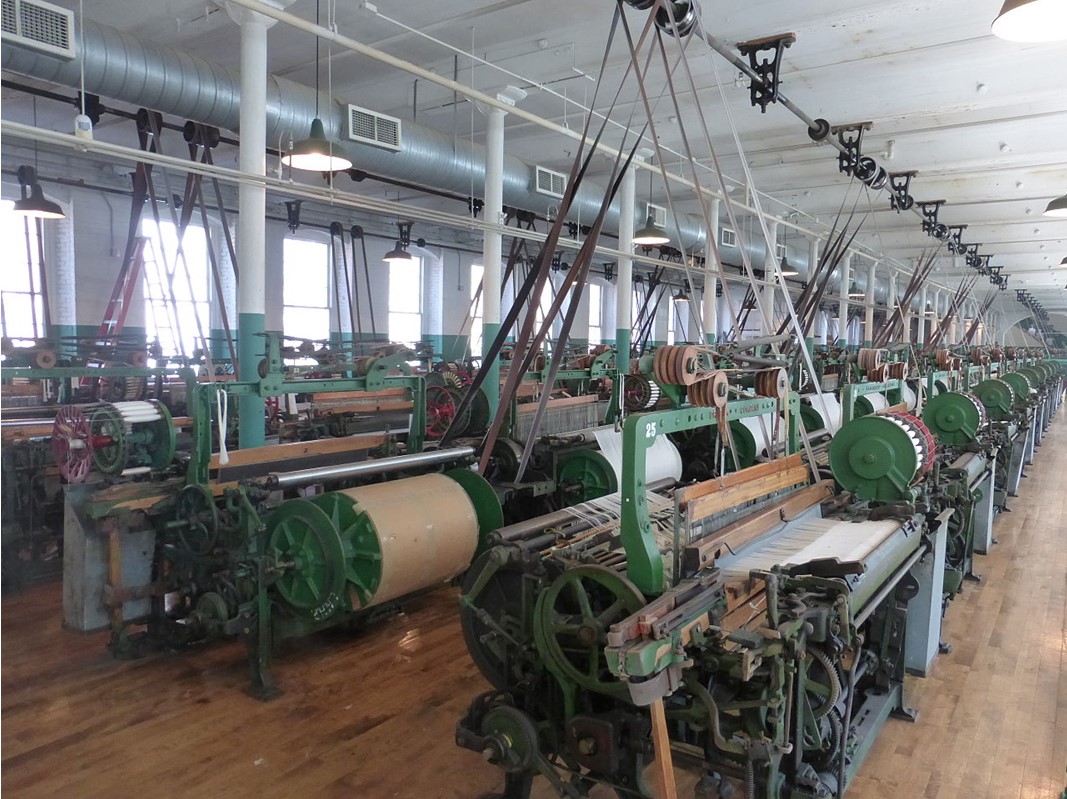Rotating Shaft Hazards
First published Summer of 2017.
Copyright 2017 John L. Ryan
Rotating shafts are a well-known hazard, and have been for many years. Common accidents involving unguarded rotating shafts include unguarded conveyor drive shafts, tractor PTO shafts, flywheels, couplings, collars, and other rotating elements. Fatalities and injuries resulting from entanglement in unguarded rotating shafts occur frequently.
The following is an excerpt from the 12th Edition of the Accident Prevention Manual published by the National Safety Council: "Rotating, reciprocating, and transverse motions create hazards in two general areas-at the point of operation where work is being done, and at the points where power or motion is being transmitted from one part of a mechanical linkage to another...Any rotating object is dangerous. Even smooth, slowly rotating shafts can grip clothing or hair, and through mere skin contact force an arm or hand into a dangerous position. Incidents due to contact with rotating objects are infrequent, but the severity of injury is always great... The danger increases when bolts, oil cups, nicks, abrasions, and projecting keys or screw threads are exposed while the machine is rotating."
Power Transmission
Rotating shaft are used for power transmission as well as at the point of operation. Power transmission means power from the source is conveyed to another machine or part of a machine where the power is used to fulfill the function of
Examples of rotating shafts used to transmit power include automobile drive axles, tractor power take-off shafts (PTO), conveyor drive shafts, heavy industrial machinery converting electric, pneumatic, hydraulic, or other power source to rotational energy. For many people, a perfectly smooth shaft rotating may not seen hazardous. It may seem counter-intuitive that such a smooth surface could grab clothing, hair, jewelry, limbs, or safety gear such as harnesses and lanyards, which contributes to the number of accidents caused by smooth rotating shafts. The perception of low hazard levels results in people not maintaining a safe distance from rotating shafts, or even bothering to consider their proximity to the shaft at all. A common unguarded hazard is a shaft end that protrudes beyond the last support bearing. Even this short amount of shaft is plenty to grab and cause entanglement. The power of the machine determines if entanglement results in injury or death.

Point of Operation
Rotating shafts are also used to perform work on products. Where the shaft performs the work is commonly referred to as the point-of-operation. Examples of rotating shafts at the point of operation include product movement such as paper, textile, rubber mills. Injury from point-of-operation rotating shafts results from entanglement with any nip or pinch. Often multiple rotating shafts are used to propel products, so pinch points and nip points are commonly found, and there are many situations where these extremely hazardous locations are unguarded. Exposure of people to these hazards are higher than power transmission rotating shafts due to the constant need to interact with the elements since product is constantly moving through. Injuries are often catastrophic, but are dependent upon the amount of power that is driving the rotating elements.
“OSHA”: 29 CFR 1910.212(a)(1) which states "One or more methods of machine guarding shall be provided to protect the operator and other employees in the machine area from hazards such as those created by point of operation, ingoing nip points, rotating parts, flying chips and sparks. Examples of guarding methods are-barrier guards, two-handed tripping devices, electronic safety devices, etc."
“OSHA” 29 CFR 1910.219(c)(2)(i) which states “All exposed parts of horizontal shafting seven (7) feet or less from floor or working platform, excepting runways used exclusively for oiling, or running adjustments, shall be protected by a stationary casing enclosing shafting completely or by a trough enclosing sides and top or sides and bottom of shafting as location requires."
ANSI B11.0 Section 7.16 states that "Mechanical power transmission apparatus shall be safeguarded by a guard, device or safe-location safeguarding method to prevent contact with hazardous machinery motion...Hazards associated with the operation of mechanical power transmission apparatus shall be eliminated by design of the equipment or safeguarded by a guard, device or safe location."
ANSI B11.19 - 2010 Section 10.4 states "Safe-location safeguarding shall meet the following requirements: a) Inadvertent access from a walking or working surface to the hazard shall be prevented by: vertical distance of sufficient height; horizontal distance; or the combination of vertical and horizontal distance."
The requirements of ANSI B11.19-2010 are based on ISO 13857 2008 as indicated on page 100 of the ANSI B11.19-2010 standard. The ISO 13857-2008 standard is an update of ISO 13852 – 1996.
ASME B15.1 Safety Standard for Mechanical Power Transmission Apparatus Section 3.1 states "All motion hazards associated with the operation of mechanical power transmission apparatus shall be eliminated by design of the equipment or protection by a guard, device, safe distance, or safe location." Section 3.2.3 states "Safe Distance. Guarding by safe distance shall be accomplished by the following methods: a). vertical distance of sufficient height above the floor or other walking or working surface , b). horizontal distance, or c). the combination of vertical and horizontal distance". Other standards give criteria for specific machines.
How We Can Help
At MASE, we can determine the cause of an accident involving rotating shafts, identify if the machine met industry standards, show guarding methods that meet standards and prevent accidents. We offer full service mechanical engineering expert witness services from machine inspection to trial testimony. Call us at (855) 627-6273 or email us at info@mase.pro